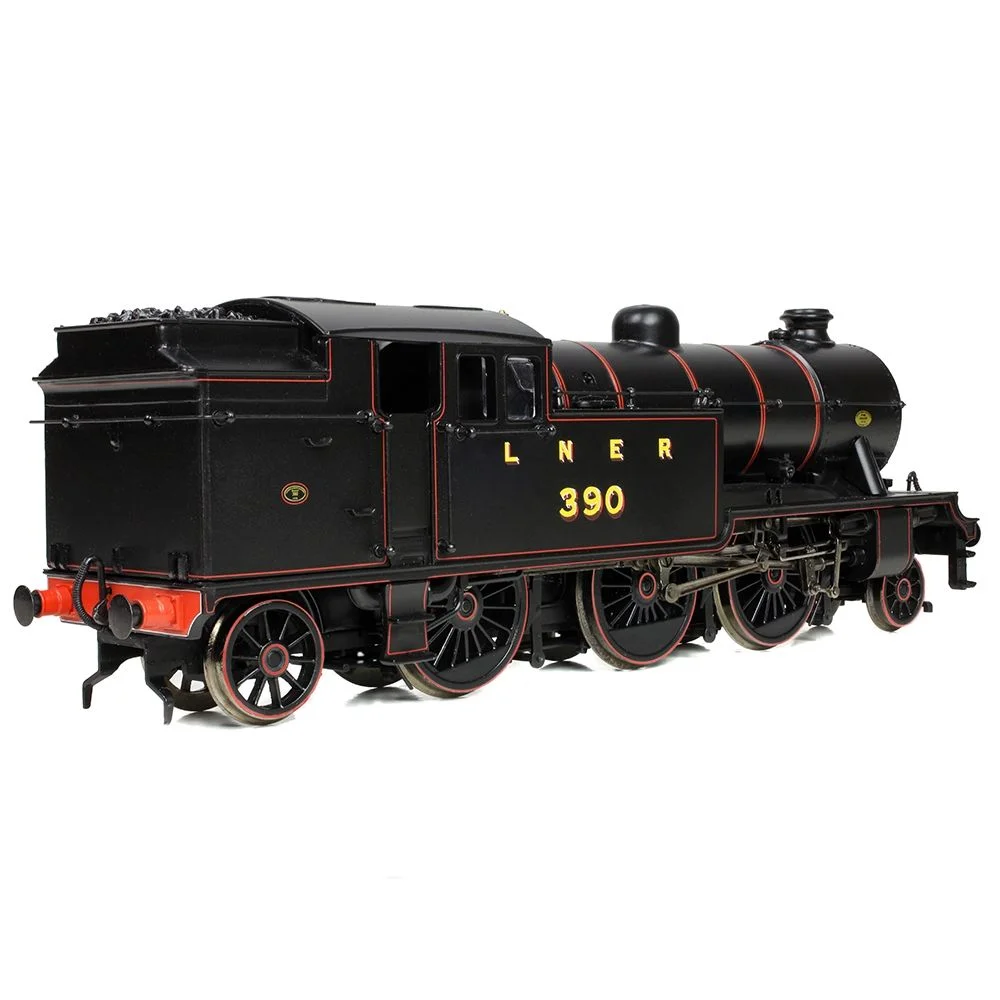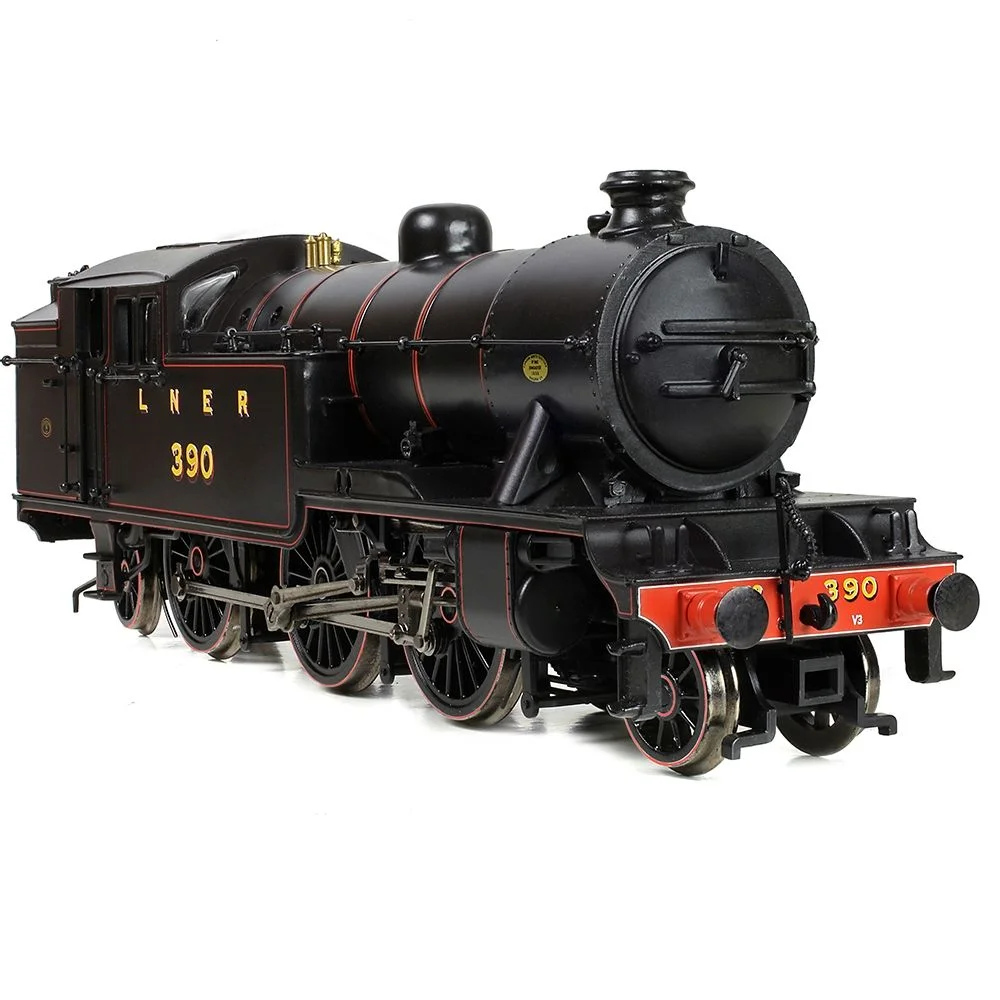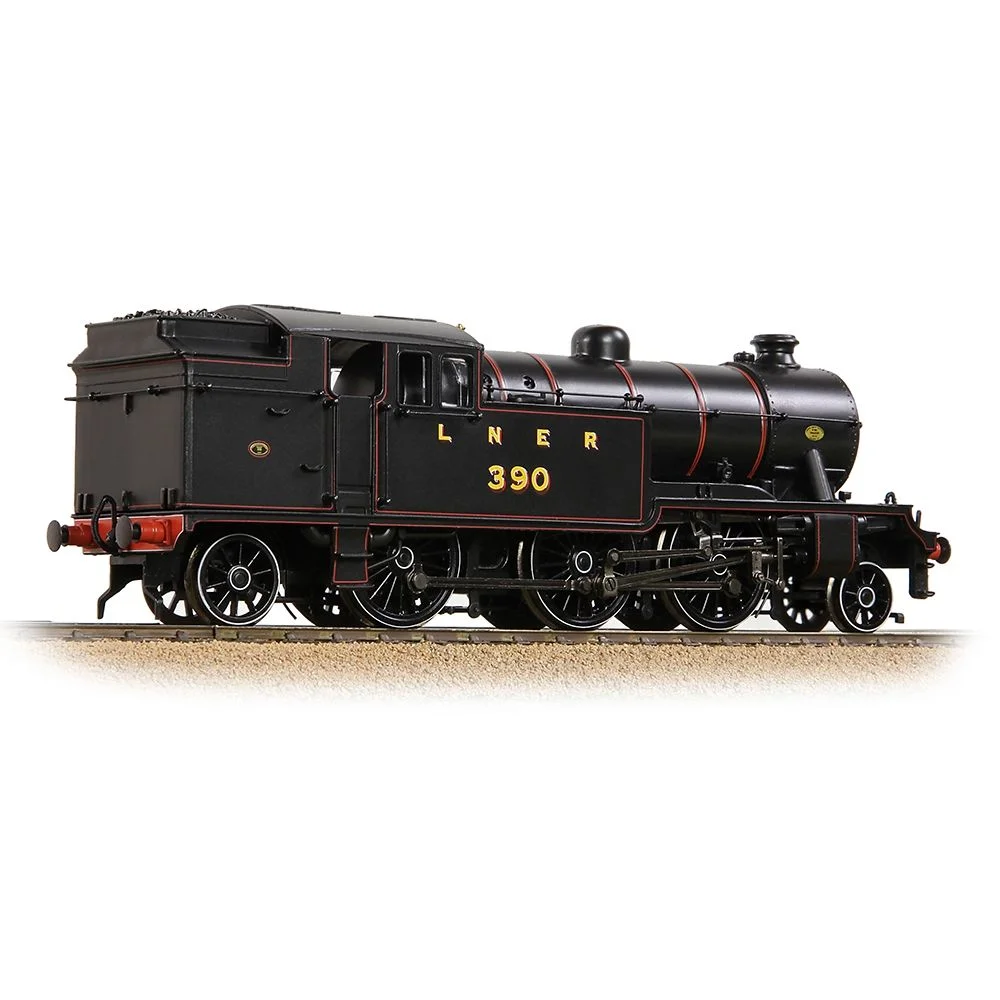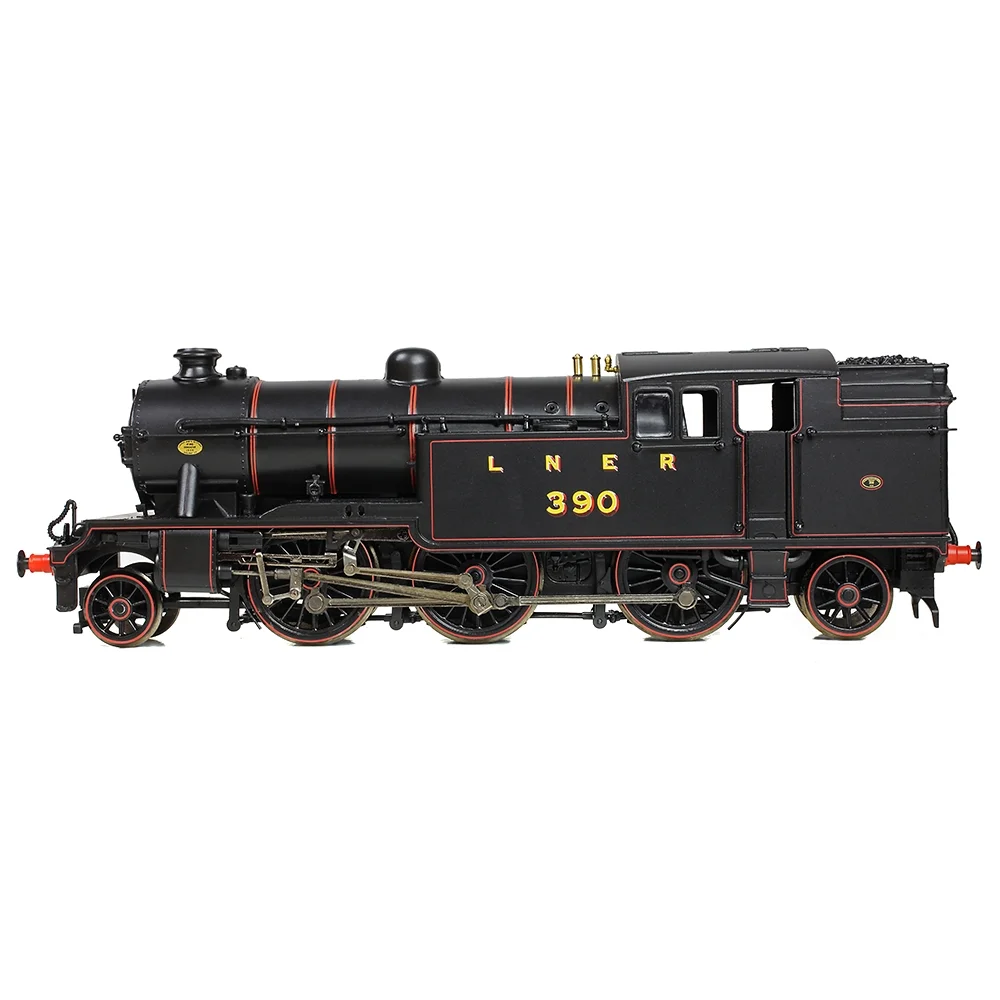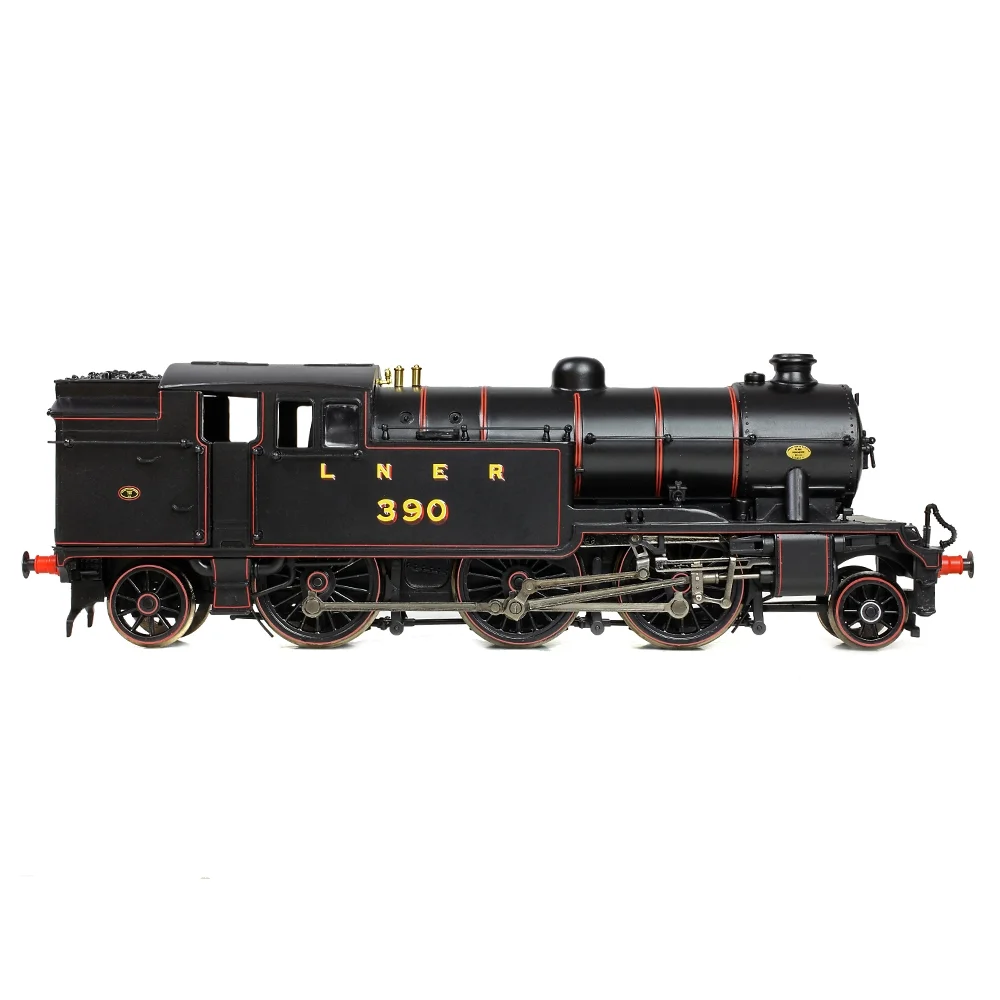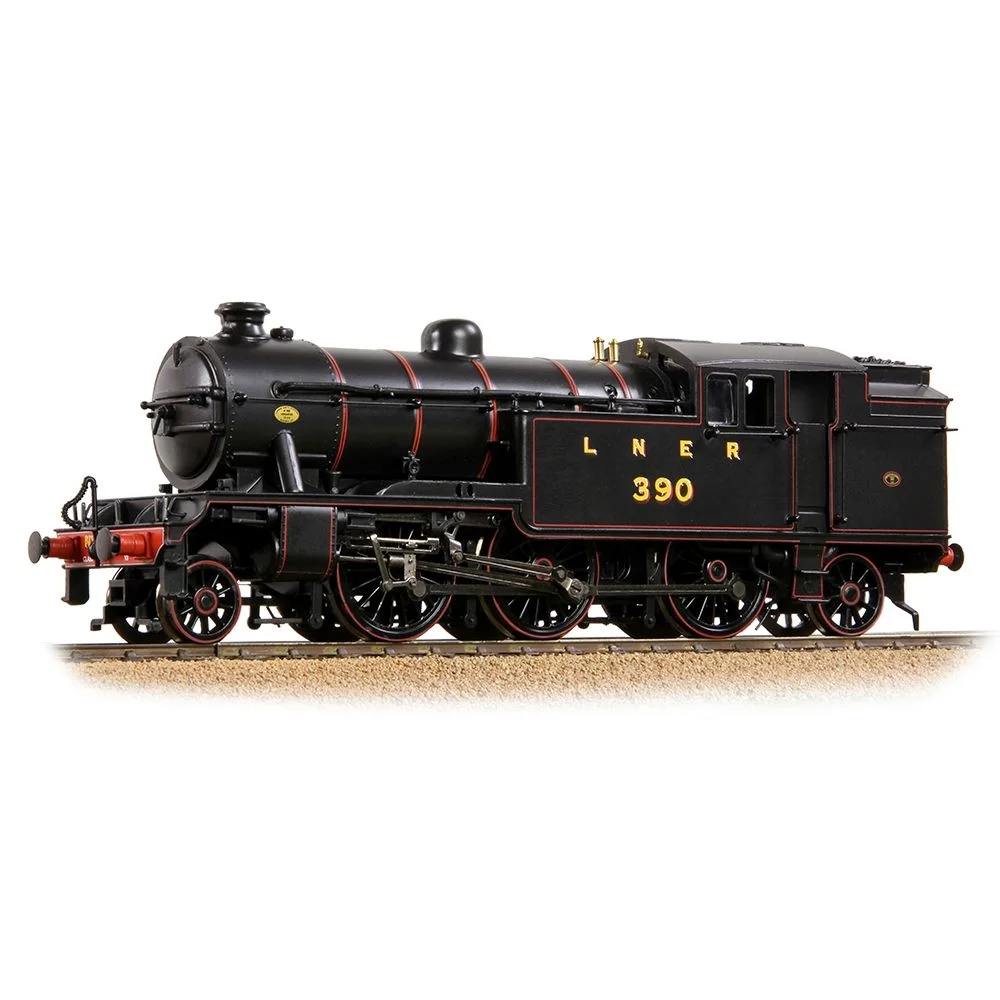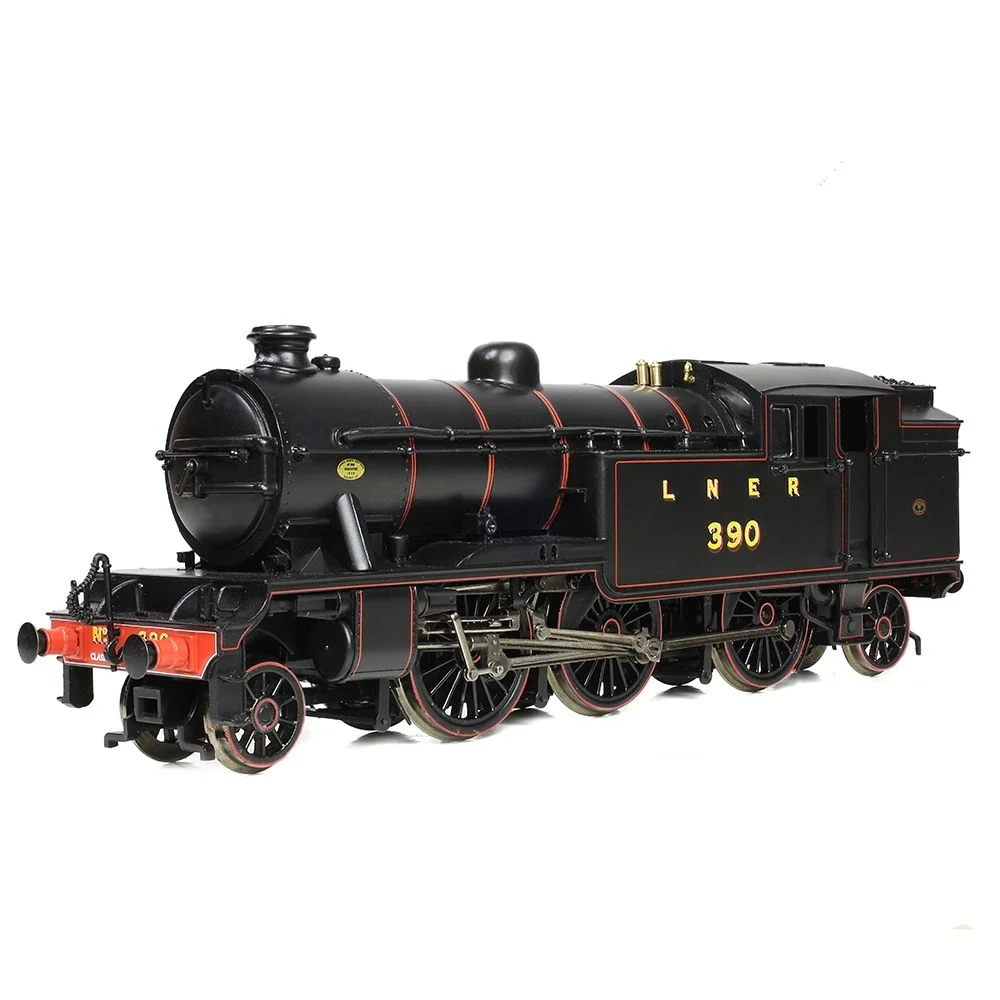Bachmann 31-617
London & North Eastern Railway V3 390 London & North Eastern Railway Lined Black
Tooling
In 2016, Bachmann introduced a completely retooled version of the LNER V1/V3 2-6-2T tank locomotive for OO gauge. This upgrade replaced the outdated split-chassis design of the 1990s with a modern, high-specification model that meets contemporary standards for detail, performance, and digital control. The tooling introduced in 2016 remains current, with later releases (including 2022) using the same design.
Tooling Features
- Scale: OO gauge (1:76), 16.5mm track.
- Construction: Highly detailed plastic bodyshell with separately fitted handrails, pipework, and fine rivet detail.
- Detailing: Sprung buffers, accurate cab interior with glazing, and accessory pack for additional detailing.
- Couplings: NEM coupling pockets with tension-lock couplers.
Mechanical & Electrical
- Chassis: Solid metal chassis block for improved weight and stability.
- Motor: Powerful five-pole motor for smooth, quiet running.
- Drive: All driving axles powered via precision gearing.
- Minimum Radius: Recommended 2nd radius (approx. 438mm); some detailing parts require 3rd radius for clearance.
- Lighting: No factory lighting, but provision for decoder-controlled lighting via Next18 interface.
- Weighting: Substantial weight for excellent traction and realistic performance.
DCC Capability
DCC Ready with a Next18 decoder socket and space for a speaker, making sound installation straightforward. Recommended decoder: Bachmann 36-567A or equivalent.
Liveries Produced
- LNER Lined Green (Era 3)
- BR Lined Black with Early Emblem (1949–1957)
- BR Lined Black with Late Crest (1957–1968)
- BR Green with “British Railways” lettering (early BR period)
Reviews & Commentary
The 2016 tooling received positive reviews for its mechanical reliability and improved detailing. While some enthusiasts note that body detail is not quite at the level of the latest premium models, the overall finish and running qualities are highly praised. Key points from reviewers and forums:
- Strengths: Smooth, quiet running; robust chassis; easy DCC and sound installation.
- Critiques: Some moulded details remain slightly heavy compared to newer designs; cab glazing still basic.
Video reviewers often highlight the model’s excellent performance and value for money, calling it “a solid runner with respectable detail.”
Media & Social Media
Popular YouTube channels and forums feature the model frequently. Videos showcase its haulage power, quiet mechanism, and ease of decoder fitting. Social media commentary generally regards the 2016 tooling as a major improvement over the original, bridging the gap between older RTR models and modern standards.
Interesting Notes
- The tooling introduced in 2016 is still in use for current releases, including 2022 variants with updated liveries.
- Accessory packs allow customization for static display or enhanced realism.
Bachmann's Description & Specifications
Featuring a detailed and true-to-prototype bodyshell coupled with a high performance chassis, which is driven by a five pole motor and complete with a Next18 DCC decoder socket and space for a speaker, this model is sure to be popular with LNER enthusiasts and adds another tank engine to the LNER locomotive fleet.
As part of our Winter 2022 British Railway Announcements, we are delighted to offer the popular Bachmann Branchline LNER V3 Tank in LNER Lined Black livery as No. 390.
- Bachmann Branchline OO Scale
- Era 3
- Pristine LNER Lined Black livery
- Running No. 390
- Accessory Pack
- NEM Coupling Pockets
- Sprung Buffers
- Powerful 5 Pole Motor
- Locomotive Ready to Accept a Speaker
- Equipped with a Next18 DCC Decoder Socket – recommended Decoder item No. 36-567A
- Length 174mm
Class & Prototype
- Class: London & North Eastern Railway V3
- Traction: Steam
- Built: 1939-1940
- Total Built: 10
- Running Number: 390
Operator & Livery
- Operator: London & North Eastern Railway
- Livery: Lined Black
- Era: 3 - The big 4 – LMS, GWR, LNER & SR
The London & North Eastern Railway emerged in 1923 as Britain's second-largest railway company, combining seven major railways including the Great Northern, North Eastern, and Great Eastern into a 6,590-mile network stretching from London's four terminals to the Scottish Highlands. Despite serving economically challenged industrial regions, the LNER achieved worldwide recognition for engineering excellence and speed records that remain unbroken today.
Under Chief Mechanical Engineers Sir Nigel Gresley, Edward Thompson, and Arthur Peppercorn, the LNER developed revolutionary locomotive designs characterised by three-cylinder layouts and streamlined aesthetics. Gresley's masterpieces included the A1 Pacifics featuring Flying Scotsman and the legendary A4 class, culminating in Mallard's world steam speed record of 126 mph in 1938.
The company pioneered luxury express services including the Silver Jubilee and Coronation streamliners, whilst investing in forward-thinking electrification schemes and massive marshalling yards. Notable achievements included operating the complete East Coast Main Line, introducing Britain's first regular 400-mile non-stop service, and commissioning Eric Gill's iconic typography that influenced railway design for decades.
Nationalised in 1948, LNER locomotives continued serving British Railways until the 1960s, with some A4 Pacifics working Scottish expresses until 1966. Today, the LNER's engineering legacy thrives through extensive preservation, new-build projects like Tornado, and comprehensive model ranges covering every major class in all popular scales, making LNER subjects essential for discerning railway modellers seeking authentic British steam-age atmosphere.
The LNER lined black livery represented the company's commitment to aesthetic excellence across all locomotive types during the early period of its existence. Introduced from 1923, this elegant scheme adorned freight engines and secondary passenger locomotives with distinctive red lining that transformed utilitarian workhorses into smart, professionally finished machines. The red lines were carefully applied to running plates, boiler bands, and cab panels, following the locomotive's mechanical contours and emphasising engineering features whilst maintaining the practical benefits of a dark base colour for heavy-duty operations.
Distinctive features of this livery included yellow lettering and numbering with red shading (contrasting with the gold used on prestigious green passenger locomotives), and "L N E R" applied in full to tenders. The lined black scheme demonstrated the LNER's philosophy that even freight locomotives deserved visual dignity and corporate identity. However, economic pressures forced changes to this refined approach: red lining was removed from goods engines as an economy measure in 1928, though secondary passenger locomotives retained their lined finish until 1941. For model railway enthusiasts, this livery perfectly captures the LNER's early optimism and attention to detail, making it ideal for depicting 1920s freight operations, mixed-traffic locomotives, and the period when the newly-formed company took pride in presenting a cohesive, quality image across its entire 6,300-locomotive fleet.
